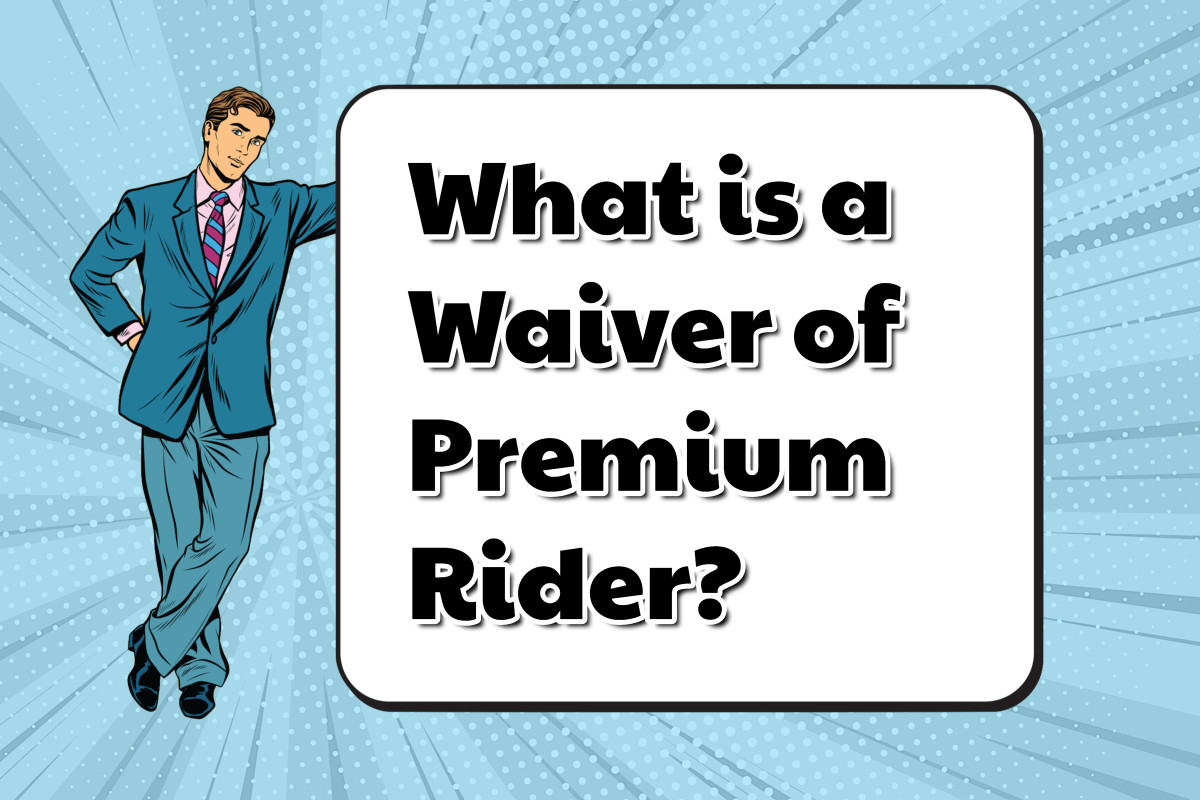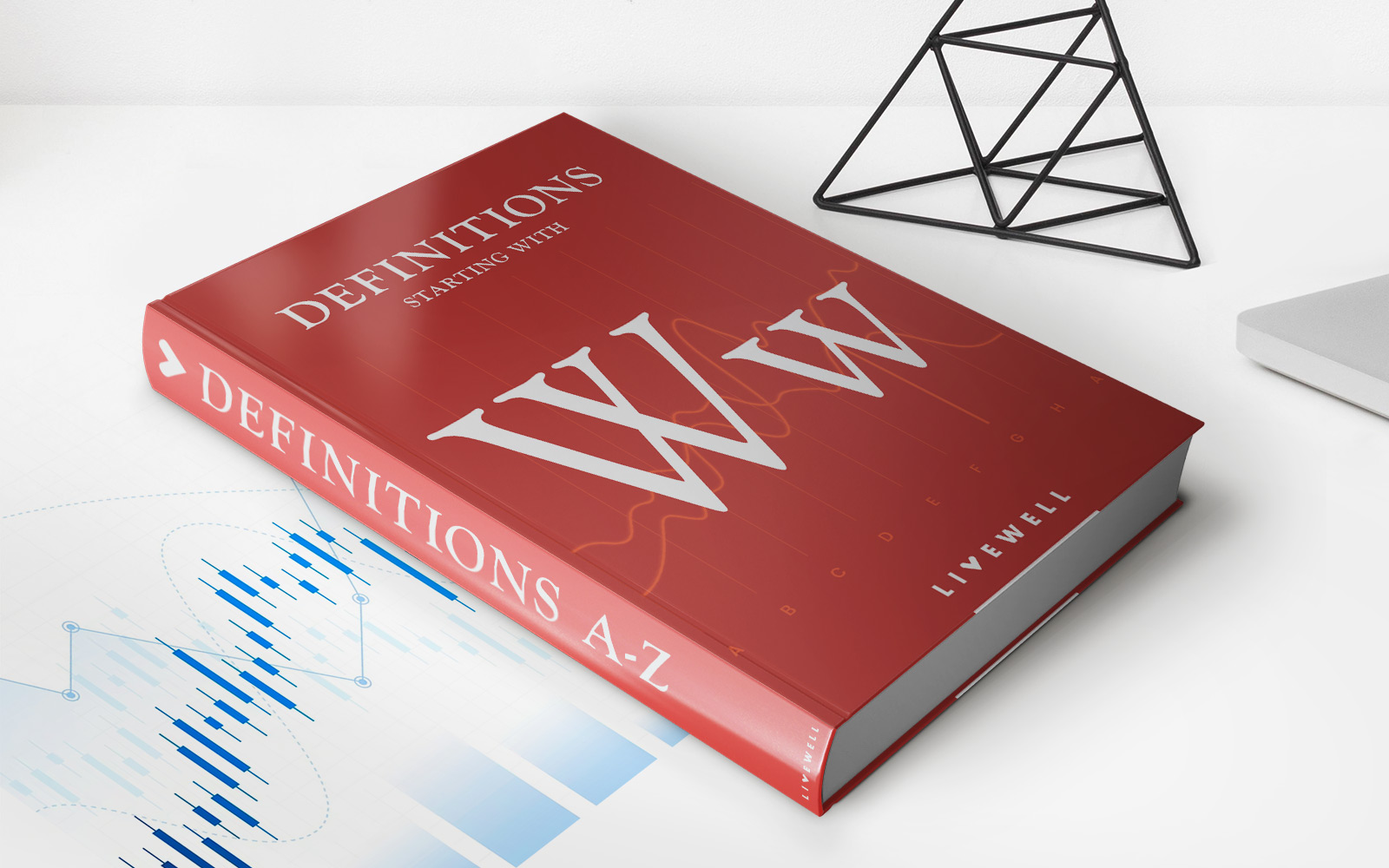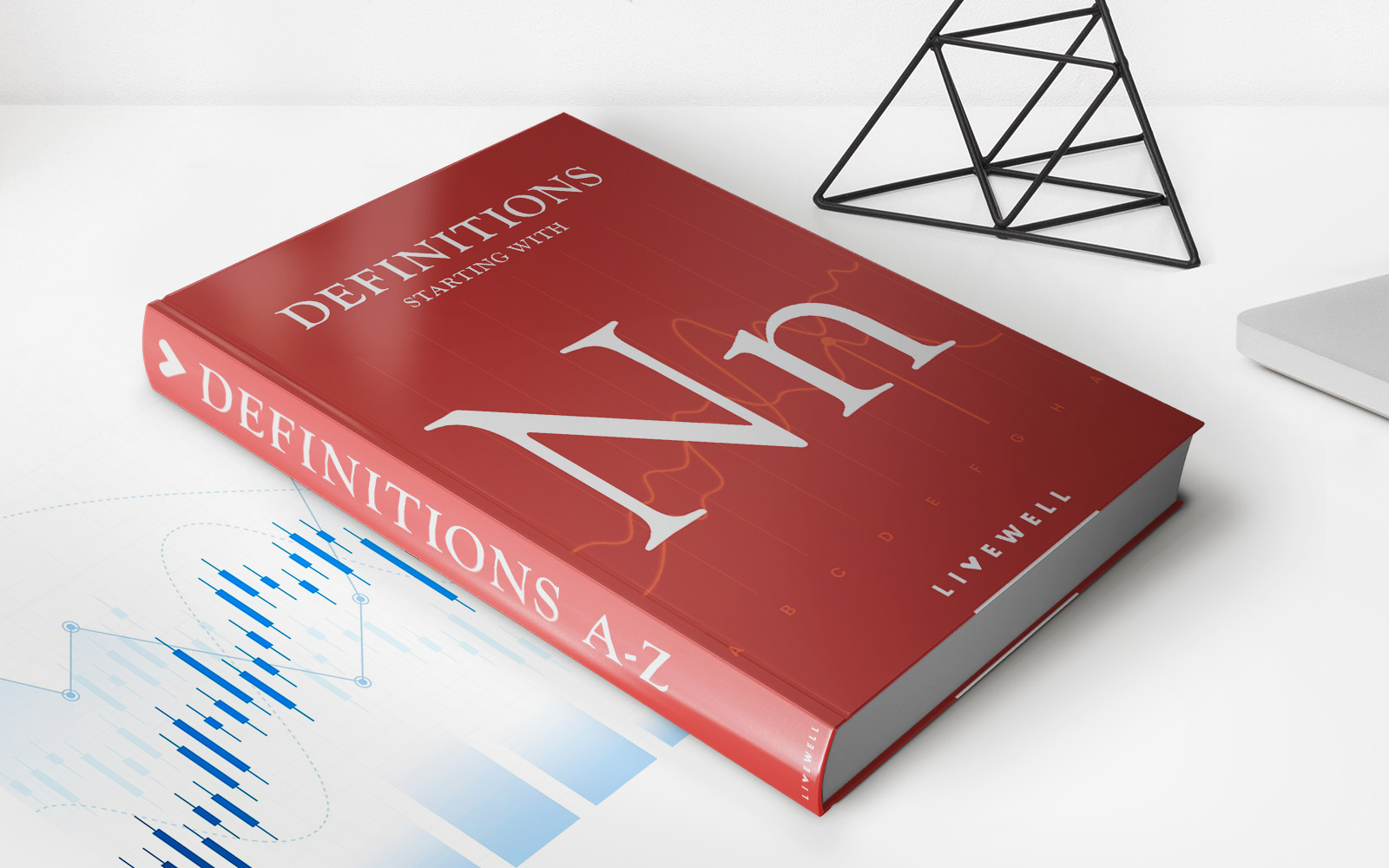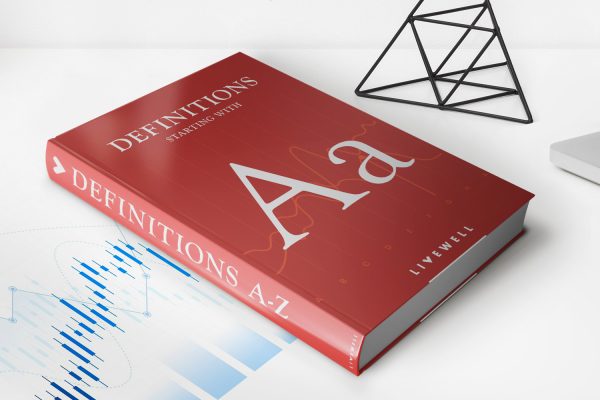Home>Finance>What Is The Waiting Period On A Waiver Of Premium Rider In Life Insurance Policies?


Finance
What Is The Waiting Period On A Waiver Of Premium Rider In Life Insurance Policies?
Modified: February 17, 2024
Learn about the waiting period on a waiver of premium rider in life insurance policies and how it impacts your finances. Find out more about this important feature.
(Many of the links in this article redirect to a specific reviewed product. Your purchase of these products through affiliate links helps to generate commission for LiveWell, at no extra cost. Learn more)
Table of Contents
Introduction
Life insurance provides financial protection to policyholders and their loved ones in the event of the policyholder’s death. However, what if the policyholder becomes unable to pay the premiums due to a disability or illness? This is where a Waiver of Premium Rider comes into play.
A Waiver of Premium Rider is an additional feature that can be added to a life insurance policy. It acts as a safety net by waiving the premium payments if the policyholder becomes disabled or seriously ill and is unable to work. This ensures that the policy remains in force, providing the intended coverage to the insured individual and their beneficiaries.
However, it’s important to note that there is usually a waiting period associated with a Waiver of Premium Rider. During this waiting period, the policyholder must continue to make premium payments even if they meet the criteria for a waiver. The purpose of the waiting period is to prevent fraudulent claims and to ensure that the policyholder has a genuine disability or illness that meets the insurer’s requirements for eligibility.
In this article, we will delve deeper into the waiting period on a Waiver of Premium Rider in life insurance policies. We will discuss the duration of the waiting period, coverage during the waiting period, exceptions to the waiting period, and the benefits of having a Waiver of Premium Rider.
What is a Waiver of Premium Rider?
A Waiver of Premium Rider is an additional feature that can be added to a life insurance policy. It provides a safety net for policyholders in the event of a disability or serious illness that prevents them from working and making premium payments. With this rider in place, the insurance company waives the premium payments during the period of disability or illness, ensuring that the policy remains in force and continues to provide coverage.
The Waiver of Premium Rider is typically offered as an add-on option when purchasing a life insurance policy. It adds an extra layer of protection and peace of mind, safeguarding the policyholder and their beneficiaries from the financial burden of premium payments during a time of hardship.
It’s important to note that a Waiver of Premium Rider is not automatically included in a life insurance policy and typically comes at an additional cost. However, the benefits it provides can be invaluable in times of need.
When a policyholder meets the criteria for the waiver, usually due to disability or serious illness, the insurance company will waive the premium payments for the duration of the disability or illness. This allows the policyholder to focus on their recovery without the worry of maintaining the life insurance coverage.
With a Waiver of Premium Rider, policyholders can have peace of mind, knowing that their life insurance policy will remain effective and continue to protect their loved ones even if they are unable to work and make premium payments.
Understanding the Waiting Period
When it comes to a Waiver of Premium Rider, it’s important to understand the concept of the waiting period. The waiting period refers to a designated period of time that a policyholder must wait after meeting the criteria for a waiver before the insurance company actually starts waiving the premium payments.
The waiting period serves several purposes. Firstly, it acts as a deterrent against fraudulent claims. Insurance companies use the waiting period to ensure that the disability or illness is not temporary or minor. By having a waiting period, insurers can confirm that the policyholder has a genuine long-term disability or illness that meets their eligibility requirements for a premium waiver.
The duration of the waiting period varies depending on the insurance company and the terms of the policy. It typically ranges from three to six months, but can be longer in certain cases. During this waiting period, the policyholder is responsible for making the premium payments as usual, even if they meet the criteria for a waiver.
It’s important to note that the waiting period usually begins from the date the disability or illness begins, rather than from the date the policyholder notifies the insurance company. This ensures that the waiting period accounts for any potential delays in reporting the disability or illness to the insurer.
During the waiting period, it is crucial for policyholders to continue making their premium payments. Failing to do so may result in the policy lapsing, leaving the policyholder without the necessary coverage. Additionally, any premiums paid during the waiting period will not be reimbursed once the premium waiver is in effect.
Understanding the waiting period is vital to managing expectations when it comes to utilizing the Waiver of Premium Rider. Policyholders should be aware that they may need to continue making premium payments for a certain duration before the waiver takes effect. This waiting period should be considered when assessing the financial impact of a disability or serious illness.
Duration of the Waiting Period
The duration of the waiting period on a Waiver of Premium Rider varies based on the insurance company and the specific terms of the policy. While the waiting period can vary, it typically ranges from three to six months.
During this waiting period, the policyholder is responsible for making their premium payments as usual, even if they qualify for a waiver. This waiting period allows the insurance company to ensure that the disability or illness is not temporary or minor, and that it meets their criteria for a premium waiver.
It’s important to note that some insurance policies may have a longer waiting period, especially if the policyholder has pre-existing medical conditions. In such cases, the insurance company may require additional assessment or documentation to determine the extent and veracity of the disability or illness.
Prior to purchasing a life insurance policy with a Waiver of Premium Rider, it’s crucial to thoroughly review the terms and conditions to understand the duration of the waiting period. Policyholders should inquire about how the waiting period is calculated and when it will start, as it may vary from company to company.
It’s worth noting that policies with shorter waiting periods may come with higher premiums, as the insurance company assumes a greater risk by starting the premium waiver sooner. On the other hand, policies with longer waiting periods may have lower premiums, as the insurance company has a longer period to collect premium payments before implementing the waiver.
Ultimately, the duration of the waiting period is an important factor to consider when choosing a life insurance policy with a Waiver of Premium Rider. It’s crucial to balance the need for immediate premium waiver with the potential financial implications of a longer waiting period.
Coverage During the Waiting Period
During the waiting period on a Waiver of Premium Rider, the policyholder is required to continue making their premium payments to ensure that their life insurance coverage remains in force. Failure to make these payments could result in the policy lapsing and the loss of coverage.
It’s crucial for policyholders to understand that the waiting period does not affect the overall coverage provided by the life insurance policy. The waiting period specifically pertains to the premium payments and the waiver of those payments in the event of a disability or illness that meets the criteria for a premium waiver.
As long as the policyholder maintains their premium payments during the waiting period, they will continue to be covered for the full benefits outlined in their life insurance policy. This includes the death benefit, which is the payout received by the beneficiaries upon the policyholder’s passing.
It’s worth noting that in the event that the policyholder passes away during the waiting period, the death benefit will still be paid out to the beneficiaries, provided that all premium payments were made up to that point. The waiting period does not impact the payout of the death benefit if the policyholder’s demise is unrelated to the disability or illness that triggered the premium waiver.
It’s important for policyholders to maintain open communication with their insurance company during the waiting period. In the unfortunate event of a disability or serious illness, it is crucial to inform the insurer and provide any necessary documentation to support the claim for a premium waiver.
While the waiting period may require continued premium payments, it’s important to remember that the coverage provided by the life insurance policy remains intact. The Waiver of Premium Rider is designed to provide financial relief when a policyholder is unable to work due to a disability or illness, ensuring that the policy remains in force and continues to protect the insured and their loved ones.
Exceptions to the Waiting Period
While a waiting period is a standard component of a Waiver of Premium Rider, there are certain exceptions where the waiting period may be waived or shortened. These exceptions vary depending on the insurance company and the specific terms of the policy.
One common exception is for accidental disabilities. In some cases, if the policyholder becomes disabled due to an accident, the waiting period may be waived, and the premium payments may be immediately waived as well. This is because accidental disabilities often do not require a lengthy evaluation process to determine the severity or permanence of the disability.
Another exception to the waiting period is for pre-existing conditions. If the disability or illness that triggers the premium waiver is directly related to a pre-existing condition that the policyholder already had at the time of purchasing the policy, the waiting period may be waived or shortened. However, the insurance company may require additional documentation or medical evidence to support the claim.
In some cases, individuals who recently purchased a life insurance policy may be eligible for an immediate waiver of the waiting period. This is often offered as a promotional or incentive feature to attract new policyholders. It’s important to carefully review the terms and conditions of the policy to understand whether this exception applies.
It’s worth noting that exceptions to the waiting period may also be influenced by the age and health of the policyholder. Older individuals or those with pre-existing conditions may be subject to longer waiting periods or stricter eligibility criteria.
It’s crucial to thoroughly review the terms and conditions of the policy and clarify any exceptions or potential changes to the waiting period before purchasing a life insurance policy. Understanding these exceptions can provide valuable insight into the coverage and flexibility of the Waiver of Premium Rider.
It’s recommended to consult with an insurance professional or contact the insurance company directly to obtain specific information regarding exceptions to the waiting period applicable to your policy.
Benefits of a Waiver of Premium Rider
A Waiver of Premium Rider offers several significant benefits to policyholders, providing them with added financial security and peace of mind during times of disability or illness:
1. Continued Coverage: One of the key benefits of a Waiver of Premium Rider is that it ensures the life insurance policy remains in force even if the policyholder becomes disabled or seriously ill and is unable to work. By waiving the premium payments during this period, the policyholder can continue to receive the full benefits outlined in the policy.
2. Financial Relief: A disability or serious illness can often result in a significant decrease or loss of income. With a Waiver of Premium Rider, policyholders are relieved from the burden of making premium payments while they focus on their recovery. This can provide much-needed financial relief during a challenging time.
3. Maintaining Protection for Loved Ones: Life insurance serves as a financial safety net for loved ones in the event of the policyholder’s passing. By adding a Waiver of Premium Rider, the policyholder ensures that their beneficiaries will still receive the death benefit even if they are unable to pay the premiums due to disability or illness.
4. Flexibility: The Waiver of Premium Rider adds flexibility to the life insurance policy, allowing the policyholder to adapt to changing circumstances. If the policyholder becomes disabled or seriously ill, the premium waiver ensures that the coverage continues, providing peace of mind to the insured and their loved ones.
5. Protection Against Policy Lapse: Without a Waiver of Premium Rider, a disabled or seriously ill policyholder may struggle to make premium payments and could risk losing their life insurance coverage entirely. The rider prevents this by waiving the premiums and preventing the policy from lapsing, ensuring that the policyholder and their beneficiaries remain protected.
6. Cost Efficiency: Although a Waiver of Premium Rider typically comes at an additional cost, it can ultimately save policyholders money in the long run. If the policyholder were to become disabled or seriously ill without the rider, they would be required to continue making premium payments, potentially causing financial strain. The rider eliminates these premium payments and provides cost efficiency during challenging times.
Overall, a Waiver of Premium Rider offers policyholders the peace of mind that their life insurance coverage would remain intact, even in the face of a disability or serious illness. It provides financial relief, flexibility, and protection for loved ones, making it a valuable addition to a life insurance policy. It’s essential to carefully review and consider this rider when purchasing a life insurance policy.
Conclusion
A Waiver of Premium Rider is a valuable addition to a life insurance policy that provides essential financial protection to policyholders in the event of disability or serious illness. While a waiting period is typically associated with the rider, it serves as a necessary measure to ensure the validity of the premium waiver and protect against fraudulent claims.
During the waiting period, the policyholder must continue to make premium payments to maintain the coverage. However, exceptions may apply, such as for accidental disabilities or pre-existing conditions, which may result in a waiver or shortened waiting period.
A Waiver of Premium Rider offers numerous benefits, including continued coverage, financial relief, the maintenance of protection for loved ones, flexibility, and protection against policy lapse. It provides policyholders with peace of mind, knowing that their life insurance coverage remains intact even during times of disability or serious illness.
When considering a life insurance policy with a Waiver of Premium Rider, it is crucial to thoroughly review the terms and conditions, understand the duration of the waiting period, and inquire about any exceptions that may apply. Consulting with an insurance professional can provide further guidance and ensure that the policy meets your specific needs.
While a Waiver of Premium Rider may come with an additional cost, its benefits are invaluable when faced with unexpected circumstances. It offers financial security, flexibility, and protection for you and your loved ones, ensuring that your life insurance policy continues to provide the intended coverage when you need it the most.
Ultimately, the decision to add a Waiver of Premium Rider to your life insurance policy is a personal one. However, considering the potential risks and benefits, it is a wise investment for those seeking comprehensive protection and peace of mind.














